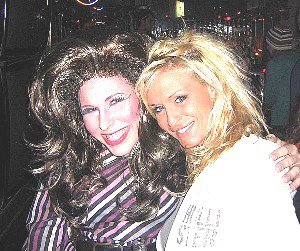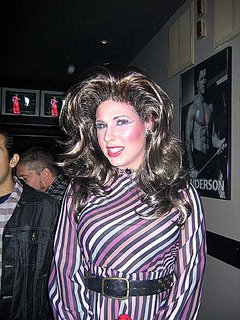Through Struggles This Lady Never Died
Through struggles this lady never died
The 19th amendment granted women the right to vote in 1920. Historians seem divided on and debate the issue of whether or not the women’s movement died in the 1920s. O’Neil argues that women’s movement “expired” in the 1920s because they had not accurately assessed the implications of women gaining suffrage or accurately prepared a plan on how to progress after the suffrage victory. After gaining the victory of woman’s suffrage in the 1920’s, O’Neil discusses how it was not the ultimate victory and revolution of change that those fighting for it had hoped. Anne Frior Scott’s article “Women with the Vote” argues that the World War among other things had distracted attention away and decreased progress by women regarding reforms but in the 1920s with the factors of the newly gained ballot vote and the war being over gave birth to a new confidence and drive for achievement. Scott focuses on Southern women and their strides throughout the 1920s. Through a thorough reading of both text, Scott’s approach triumphs over that of O’Neil’s by showing solid examples of a still breathing women’s movement on multiple fronts while O’Neil says he wants us to believe the movement has died but really paints a picture of a still fighting yet struggling women’s movement.
Anne Scott’s argument was compelling and very well backed up with so many examples of political action on the part of women which led me to believe that the women’s movement was nowhere even close to being dead in the 1920s. She shows active progress, fights and attempts being made by the women’s movements in areas such as child labor reform, women’s labor reform, and black women’s rights among other issues on the states level and the national level. According to Scott, The central issue which woman united together to reform was children’s problems which she backs up by showing the examples of Virginia, Georgia, and the Shephard-Towner Act. She shows in her example of the Sheppard Towner Act ,where women all over the country put pressure on Congress to pass the Sheppard-Towner Act for maternal and infant health, how this combined nationwide effort among women led to nineteen of 26 sourther states voting for the bill and ultimately 279 votes in support of the bill in the entire house and “became the first concrete national achievement of newly enfranchised women.” Using this example first is a great tactic on Scott’s part because she presents one of her strongest points first. She cites evidence of southern women thinking ahead of their times and playing an important role in the interracial movement with the example of the 1920 Memphis Churchwoman conference where four African American women were invited to speak on the needs of Southern African Americans which led to the formation of the Woman’s Department of Will Alexander’s Commision on Interacial Cooperation headed by Mrs. Luke Johnson. Under Johnson’s leadership, interracial committees were organized in every southern state. Following the same trend, Jessie Daniel Ames was involved with women trying to improve Negro housing, schools and railroad accomadations in 1924 and by 1930, under her leadership, helped form the Assocation of Sourthern Women for the Prevention of Lynching. Again Scott shows a trend of the women’s movement growing and improving itself by helping out on multiple fronts for a single issue with much success. Scott cites evidence of women trying to understand the political system and to improve the system such as in 1922 in Virginia with improved election laws and in Georgia and Tenessee where they successfully had campaigns to revise state constitutions in order to improve efficiency. Scott admits that the nineteenth admendment did not change everything and that women were met with opposition but in spite of this, they were able to accomplish much.
O’Neil uses representative individuals of the pre-suffrage and post suffrage era women’s movement, the defeats of the woman’s movement in the 1920s and the fault’s of the new woman’s party in order to portray his expired view of the woman’s movement. He cites the evidence of the tale of Ann Martin who ran for senate several times from Nevada was annoyed in 1920 when the National conference of Republican Woman failed to organize a distinctive femine program and in 1924 when LaFollette managers picked a Socialist candidate to run on the third party ticket although she had outpolled him in the previous election. He cites other discouraged women such as Carrie Chapman Catt, Emily Newell Blair, vice chairman of Democratic National Committee from 1921 to 1928, and Anna Howard Shaw who says “I am sorry for you young women who have to work to carry on the work in the next ten years, for suffrage was a symbol, and now you have lost your symbol. There is nothing for the women to rally round” in an attempt to make a statement of show that even those who were hardcore supporters of the women’s movement before the had now given up hope for the women’s movement. While their hopes may have been dashed and caused them to be disillusioned, it is apparent from Scott’s article that did not stop other women from attempting and succeeding in effecting change.Their quotes and their failures as discussed by O’Neil in big party politics can not really reflect the whole spectrum of the women’s movement in the 1920s. One of his main points that he uses to prove his argument is to try to show the lack of accomplishments and the emphasize as much as possible every conceivable loss on the side of the women’s movement. He says that the Leage of Women Voters which followed the National American Woman Suffrage association could not live up to its prodecesor ,because of the fact that it had lost many great fights did not appeal to younger generation of women in the same way NAWSA did in the suffrage days and failed to properly incorporate and embrace militant feminists . The disbandment of the old women’s party in 1921 and the creation of a new one is spun in a very negative light where O’Neill cites evidence from Florence Kelly of a neutral stance on standing up for African American woman because “Negro women were discriminated against equally with Negro men”, viewed protective legislation on behalf of working woman as discriminatory and cites the manifesto as beginning with “women today, although enfranchised, are still in every way subordinate to men” which offended veteran suffragists, who were also offended by the party’s claim to be suffragist only heir. He paints the extreme feminists which he strongly ties to the WP in a very bad light calling them “hopelessly bad politicians” who did not properly understand the game of politics ,discusses how 5 WP endorsed congress candidates were beaten and harps upon failures and how they got very little accomplished. In a great sense he sums up his opinion of the women’s movement with this quote by John Gordon Ross saying that they “promised almost everything and accomplished almost nothing”.
A more apt title to O’Neill’s article could be “the trials and struggles of the women’s movement in the 1920s”. Had this been the thesis that O’Neill had tried to prove, he would have been much more successful with his arguments but as the article stands, O’Neill failed to convince me that the women’s movement came to its end in the 1920s. He definitely paints a dismal quite shocking picture of the woman’s movement in the 1920s but even he in his article produces evidence that women were still fighting. . It took women 70 years to gain suffrage so things in the post-suffrage era were not going to change overnight. Women’s suffrage was not some fairy godmother who instantly transformed the world or the political arena with the suffrage wand nor should it have been expected to. It seems that O’Neill focuses on how the struggle, trials, problems, disappointments of the women’s movement. Is a person dead because their arm is broken, if they have cancer or a sickness? No. In the same way a movement is not dead simply because it faces adversity, tough challenges, and divisiveness. When O’Neil quotes Rose Schnierdman with saying, “We started twelve years ago fighting for a forty-eight hour week. We are still fighting for it, and I can’t see that it is a bit easier now, that we make anymore impression of the Legislature than we did before we could vote.” This quote definitely shows apparent struggles and disappointments of people involved in the women’s movement but it also reinforces the idea that their was still an active fight going on in the women’s movement which actually disproves the idea that the women’s movement had come to a halt.The tone of the article seems very antagonistic towards woman especially in the use of quotes that O’Neill has selected even though he does admit the harshness of some of the quotes and tries to balance it with sympathy.
O’Neill’s evidence really is no evidence at all because for the most part his examples with Anne Martin, who was actively pursueing the women’s movement in her quest for political position, and Emily Newell Blair along with the Women’s Party and the Leage of Women’s voters show a continued effort of the women’s movement throughout the 1920s which actually refutes his argument and supports Scott’s. Scott spends most of her time showing active s examples of pursuits and successes that were carried out through the 1920s movement rather than focusing on quotes and lines in the constitution of the WP Party like Scott spent so much time doing.
I can not ignore the evidence shown by Scott which aligns with our text book so not only did Scott prove to be the more convincing essay, I also believe it is the most historical accurate.The women’s movement in the 1920s made great strides on a bumpy trail and experience their share of struggles. They, yet again, proved that when women unified together for a common goal they could achieve much.












